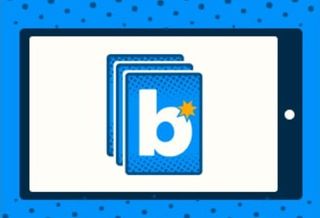Boom Cards, the online skill development platform, provides a gamified experience for students to practice a wide range of concepts and content. Due to the customizability, media options, and independent practice opportunities, many special education teachers find Boom Cards to be a useful edtech tool for their students.
For an overview of Boom Cards and more details on some of the various features, check out What is Boom Cards and How Does It Work? Best Tips and Tricks.
This sample lesson plan for special education allows teachers to incorporate Boom Cards in their instruction, however, Boom Cards could be used for any student who may need extra support.
Boom Cards Lesson Plan: Subject
Social Studies
Topic
Neighborhood Places
Learning Objectives
At the end of the lesson, students will be able to:
- Identify six places in a neighborhood including a grocery store, post office, fire station, hospital/clinic, school, and playground
Starter
Before starting the lesson, create a classroom with Boom Cards. This way, all of your students' work will be housed there. Also, you need to already have a Boom Cards classroom in order for students to create a student account.
As an alternative, you can create the student accounts. Do not worry, if you have hundreds of students, there is a bulk creation option which can be done quickly. Boom Cards provides directions and steps for student accounts to be created. The number of accounts you have depends on which plan you select.
Create "Decks"
Boom Cards refer to each set of cards as decks. By clicking the Studio tab at the upper right hand corner of the Boom Cards webpage, you will be taken to the interactive deck-maker platform. You start with the template card that will be present on each card in the deck, and then add cards to the deck. Options to help build each card are abundant, and with the drag-and-drop feature, you simply drag into the card the type of media you want to add.
For this lesson, you may want to use the following:
Text: To name the different neighborhood places (grocery store, post office, fire station, hospital/clinic, school, playground).
Button: To place the text in, which also helps add a design layer to the card.
Image: To add an image of the different neighborhood places to match the associated text. Images can be uploaded or purchased (starting from 20 cents each) directly from Boom Cards.
Multi-Picts: To have multiple pictures appear in one frame. For example, you could have four types of hospitals/clinics: traditional/ER, urgent care, pediatrician office, and veterinarian office, and then students would need to identify one.
Video: You may want to add a video of what the inside of each of the different neighborhood places looks like.
Other media options offered within the Boom Cards studio include caption pic, fraction, fill in the blank, sound, and multi-choice. A host of color, shape, font, and resizing options is also available.
Practice and Independent Learning
Once you have completed decks, you need to go to the Library where your decks are housed, and assign each one to students.
Boom Cards allow for individualization, so you can create decks that meet the specific needs and goals of students, or you can have decks for the entire class.
If you do not want data on students' performance and want them to quickly engage with the cards, the “Fast Pin” option can be chosen, which will take students to FastPlay. If you would prefer student reports and ensure you get feedback from their performance, you will need to use the “Hyperlink” option, which creates a link for the student and takes them to the deck.
What If I Do Not Have the Time to Create Boom Cards?
If you do not have the time or interest in creating your own decks, there are free and paid options of decks offered within the Boom Cards platform. Many options already exist, covering a wide variety of subject areas and grade levels, including speech therapy, social-emotional learning, world languages, and holiday/seasonal.
Try out Boom Cards and see what you come up with. Whether for a lesson such as this, or others, you may gain joy with the creation and creativity process. For students who are ready, you may want to have them join you in the creation process of Boom Cards too!

